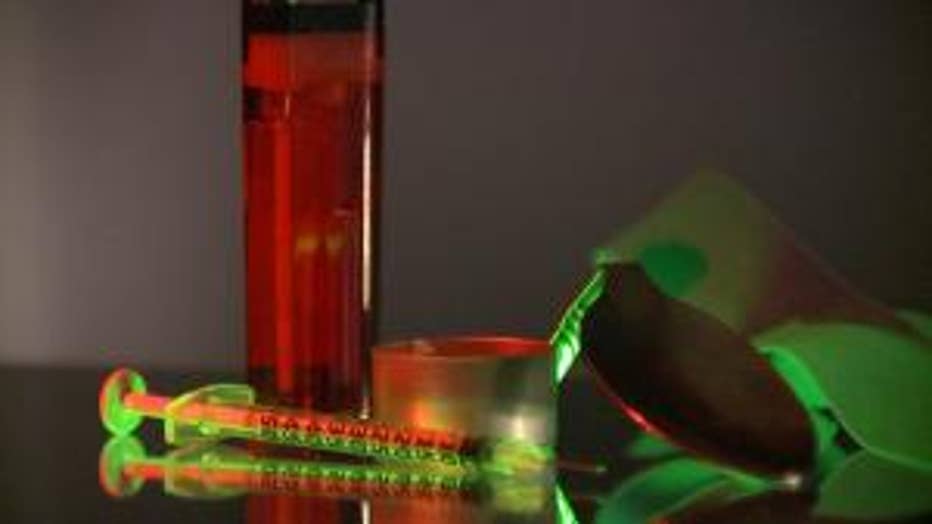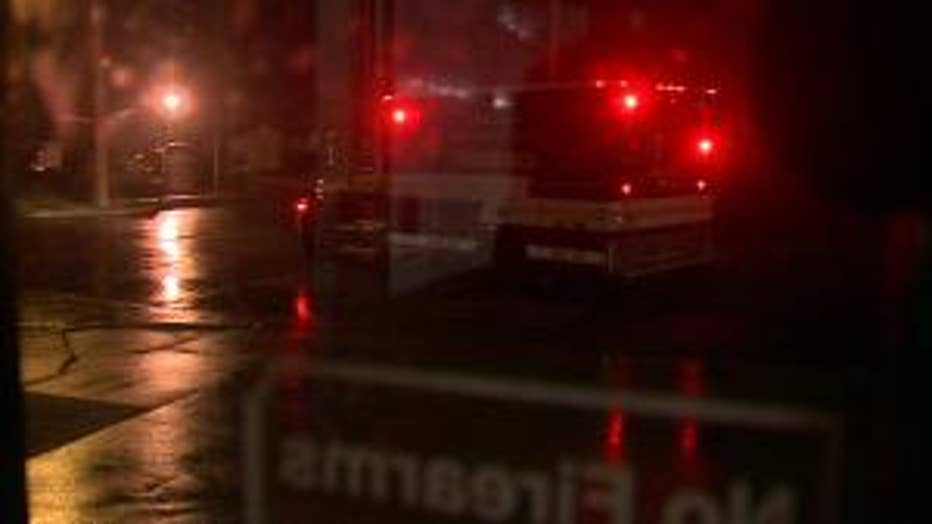'Miracle drug' can reverse overdose in seconds
MILWAUKEE (WITI) -- A deadly poison is killing hundreds of Wisconsin residents every year. That poison is heroin. And a FOX6 investigation finds that many of those people could have been saved by a so-called 'miracle drug' that can reverse the effects of an overdose in seconds.
Narcan -- also known by its generic equivalent, Naloxone -- is specifically designed to reverse the effects of an overdose.
"It's an opiate antagonist," said Scott Stokes of the Aids Resource Center of Wisconsin or ARCW. "It blocks the opiate in the brain, if it`s already in the brain it kicks it out in for a period of time."
It can literally revive a dying man in a matter of seconds.

"Narcan is, in a way, a miracle drug," said Wisconsin Attorney General, JB Van Hollen.
First developed in the 1960's, Narcan has been a staple of emergency medical response for years.
But lately, EMT's and paramedics across the state are using it more than ever before.
According to the Wisconsin EMS Association, emergency medical workers have used Narcan nearly 10,000 times the past three years. That includes more than 1,700 deployments last year in Milwaukee County alone... a 33 percent increase since 2010.
Drug enforcement experts say it's evidence of a widening heroin epidemic.
In 2003, heroin killed 7 people in Milwaukee County. Last year, it killed 39. But Wisconsin Department of Justice Agent Dave Spakowicz says that number could be far higher.
"Our overdose deaths would be through the roof if it wasn`t for Narcan," Spakowicz said. "It is truly, truly saving hundreds and hundreds of lives in Wisconsin."
And that's why there's a movement to get it directly into the hands of I-V drug users.
"We just got another shipment of Naloxone to hold us over for a couple months," Stokes said.
Stokes is the director of prevention for the AIDS Resource Center of Wisconsin, which runs a needle exchange program. The ACRW supplies clean needles to heroin addicts to prevent the spread of disease.
But after an especially deadly batch of heroin swept the country in 2005 they started handing out Naloxone too.

"It made perfect sense that needle exchanges had access to the high risk population," Stokes said.
The ARCW trains heroin users how to save other users by injecting them with Naloxone, then sends them home with a prescription and two vials of their own.
A young woman who asked that we not show her face -- we'll call her Jenny -- witnessed a near-fatal overdose just a few months ago.
"I was freaking out," she said. "I didn't know what to do and she wasn`t doing anything except making this weird noise, then she stopped. She`s turning pale, looks like she`s a corpse and so I was freaking out, so I called my friend and was like, do you know anyone with Naloxone?"
The experience left an impression.

"I came in after that and I got trained. I needed it on me. I carry it at all times no matter what. You never know, and saving a life, it`s awesome to be able to do that."
But giving Naloxone directly to heroin addicts is not without controversy. Wisconsin Attorney General JB Van Hollen supports the safe use of Naloxone, but he's not yet sure if giving it directly to users is good public policy.
"Are we encouraging heroin abuse, or are we encouraging the saving of lives?" Van Hollen asked. "Unfortunately, it provides somewhat of a safety cushion for heroin abusers who think they can push the level of that intoxication from heroin just a little farther."
"There's a lot of people that really look at this as enabling," Stokes said. "Some people feel that it's a consequence of drug use. And I can live with that if the consequence is losing your drivers license for driving while intoxicated, but when the consequence is death and we have something that is relatively cheap and not a substance that you can abuse in itself, we need to provide that."
But the movement to get Naloxone into the hands of drug addicts doesn't stop with needle exchanges. Earlier this month, the FDA testified before Congress about moving Naloxone to over-the-counter status.
"Maybe this is something that needs to be looked at," said U.S. Rep. Michael Burgess of Texas. "Because anyone who has ever seen the dramatic reversal of an amp of narcan on an opiate overdose will understand that you go from crisis to normal in the space of 26 seconds."
"I've only administered it like, three times but I`ve seen it administered at least 20 times before. So that`s 20 lives right there that were saved," said Jenny.
For now, people like Jenny will have to rely on needle exchange programs to help keep their addiction from becoming a death sentence.
"Watching that in front of you is the scariest thing," Jenny said. "It really is and I wish that, you know, that would be a huge motivation for me to stop but unfortunately heroin is a really powerful drug."

